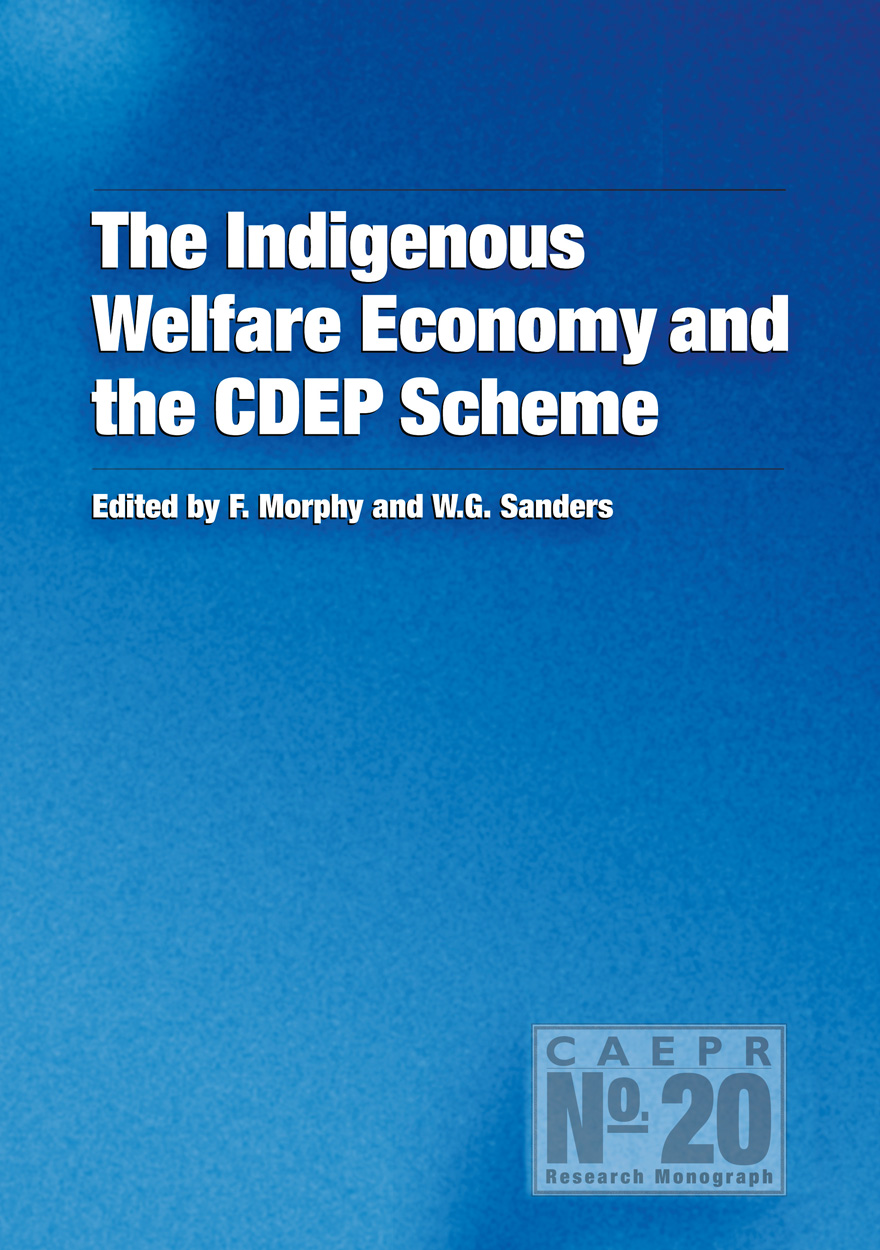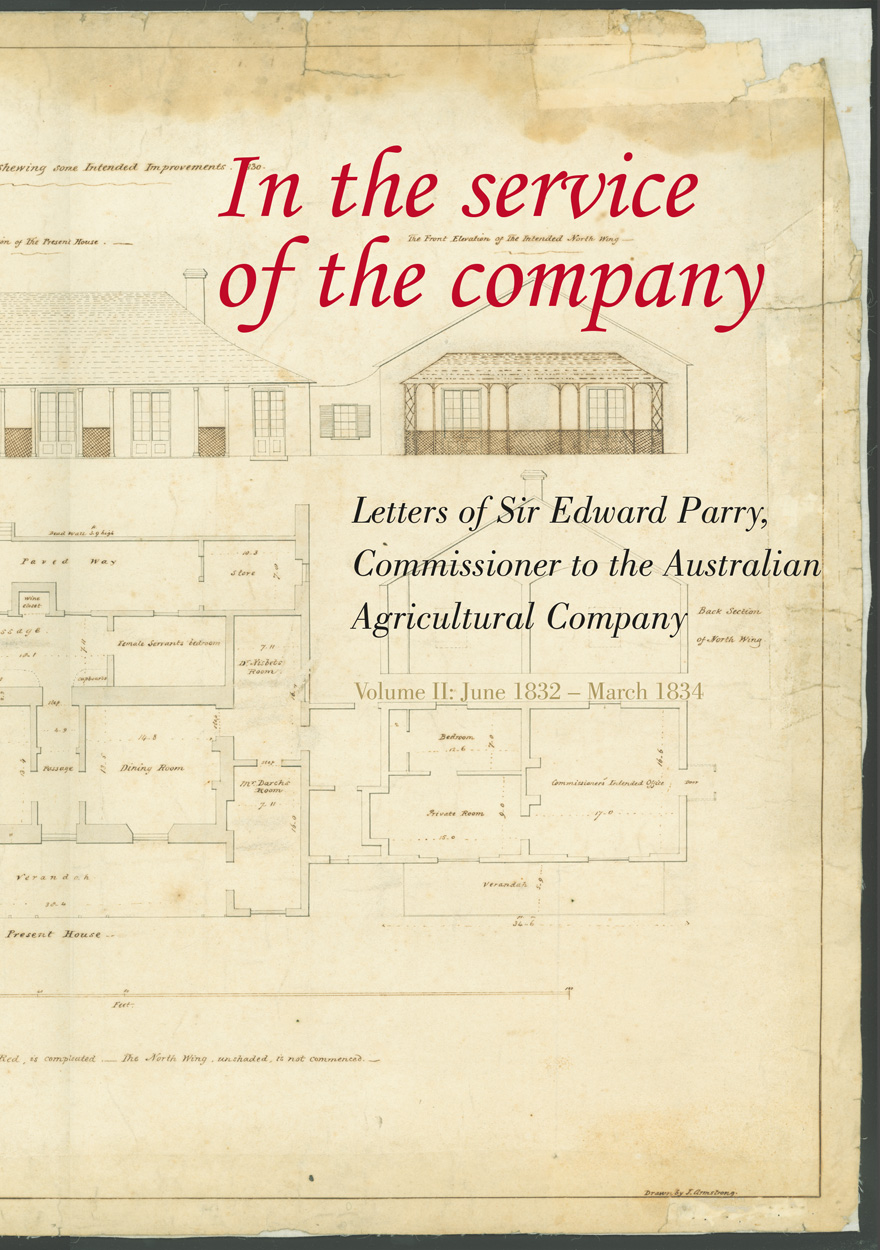Books
Browse or search ANU Press' range of books or find out more about the publications' authors and co-publishers. Download the book for free or buy a print-on-demand copy.
Displaying results 771 to 780 of 780.

Humanities Research Centre »
A history of the first 30 years of the HRC at The Australian National University
Authored by: Glen St John Barclay, Caroline Turner
Publication date: May 2004
‘This book may claim to be no more than a history of the HRC at ANU. It is, of course, much more than that. It is certainly an examination of the role and predicament of the humanities within universities and the wider community, and it contributes substantially to the ongoing debate on an Australian identity.’
Malcolm I. Thomis

State and Society in Papua New Guinea »
The First Twenty-Five Years
Authored by: R.J. May
Publication date: May 2004
On the eve of Papua New Guinea’s independence in 1975 there were many – both within the country and outside – who predicted political anarchy, with the possibility of an army coup or authoritarian single-party dominance, and economic collapse. Such fears appeared to have been justified when in 1975 both the North Solomons (Bougainville) and Papua unilaterally declared their independence. In fact, however, PNG achieved a smooth transition, and in its first decade as a new state enjoyed a high degree of political and economic progress. It remains one of the few post-colonial states that has maintained an unbroken record of democratic government.
Nevertheless, from around the mid-1980s a number of problems have become apparent, including: a decline in government capability; increasing problems of urban and rural lawlessness; poor economic management, with growing evidence of nepotism and corruption; environmental degradation associated with mining and logging, and increasing pressure on land; and, from 1988, a rebellion on Bougainville.
This volume brings together a number of papers written by the author between 1971 and 2001 which address issues of political and economic development and social change in Papua New Guinea.
Dr R.J. May is a senior fellow in the Department of Political and Social Change, Research School of Pacific and Asian Studies at The Australian National University. He was formerly a senior economist with the Reserve Bank of Australia and later foundation director of IASER in PNG (now the National Research Institute). In 1976 he was awarded the Independence Medal for his services to banking and research in PNG.

The Indigenous Welfare Economy and the CDEP Scheme »
Edited by: Frances Morphy, Will Sanders
Publication date: May 2004
In recent debates about the Indigenous welfare economy, the Community Development Employment Projects (CDEP) scheme has not been given the attention it deserves. It represents a major adaptation of the Australian welfare system to the particular social and economic circumstances of Indigenous people.
Part I of this volume contains overview papers which place the CDEP program in its wider cultural, sociopolitical, and economic contexts. The contributions in Part II address policy and policy-related issues which impact directly, or indirectly, on the structure and function of the CDEP scheme as a whole and of individual CDEP projects. Part III presents research based case-studies of particular CDEP projects in their regional contexts, drawn from the Northern Territory, South Australia, and Victoria. Part IV consists of short case studies, from the perspective of the participants themselves, of a number of CDEP organisations. These case studies provide an important perspective, taking up and providing a grass-roots view of many of the broader policy themes and concerns that are discussed elsewhere in the monograph.
The crucial issue, addressed by many of the contributions, is how Indigenous self determination and the rights agenda, which argues for the unique and inherent rights of Indigenous Australians, will sit with (or in opposition to) the ‘mutual obligation’ of the Howard government’s welfare reform. The volume thus represents a contribution to an ongoing and important debate in current Australian social policy.

The Military and Democracy in Asia and the Pacific »
Edited by: R.J. May, Viberto Selochan
Publication date: March 2004
In The Military and Democracy in Asia and the Pacific, a number of prominent regional specialists take a fresh look at the military’s changing role in selected countries of Asia and the Pacific, particularly with regard to the countries’ performance against criteria of democratic government.
Indonesia, Thailand, the Philippines, Burma, Pakistan, Bangladesh, South Korea, Fiji and Papua New Guinea all fall under the spotlight as the authors examine the role which the military has played in bringing about changes of political regime, and in resisting pressures for change.
Under the auspices of The Australian National University’s Department of Political and Social Change, Research School of Pacific and Asian Studies, and within the context of the Regime Change and Regime Maintenance in Asia and the Pacific project, the following contributors compiled The Military and Democracy in Asia and the Pacific: Emajuddin Ahamed, Suchit Bunbongkarn, Stephanie Lawson, R. J. May, Hasan-Askari Rizvi, Viberto Selochan, Josef Silverstein, Michael Vatikiotis and Yung Myung Kim. The Military and Democracy in Asia and the Pacific provides a sequel to Viberto Selochan’s earlier collection, The Military, the State, and Development in Asia and the Pacific (1991).

Black Words White Page »
Aboriginal Literature 1929–1988
Authored by: Adam Shoemaker
Publication date: March 2004
Fifteen years after its first publication, Black Words White Page remains as fresh as ever. This award-winning study – the first comprehensive treatment of the nature and significance of Indigenous Australian literature – was based upon the author’s doctoral research at The Australian National University and was first published by UQP in 1989. Adam Shoemaker combines historical and literary analysis as he explores the diversity and difference of writings that have gained increasing strength and visibility since that time. Shoemaker’s special focus is those dynamic years between 1963 and 1988, when advances in Indigenous affairs were paralleled by a rapid growth of all types of Black Australian literature. He examines the achievements of leading figures in the Aboriginal movement such as Jack Davis, Kevin Gilbert, Charles Perkins and Oodgeroo. He also provides intriguing insights into the socio-political contexts of the time while tracing the history of black-white relations in Australia. Black Words White Page also offers some provocative re-evaluations of white Australian writers Xavier Herbert, Ion Idriess, Katharine Susannah Prichard, Patrick White and Judith Wright.
Winner of the 1990 Walter McRae Russell Award of the Association for the Study of Australian Literature

Aboriginal Population Profiles for Development Planning in the Northern East Kimberley »
Authored by: John Taylor
Publication date: March 2004
John Taylor is a Senior Fellow at the Centre for Aboriginal Economic Policy Research, The Australian National University, Canberra.
The Northern East Kimberley region of Western Australia is poised at a development crossroads with decisions pending on the extension or closure of Argyle Diamond Mine, and the ever-present prospect of agricultural expansion based on Ord Stage II. This region also has a major economic development problem—half of its adult population (almost all Aboriginal) is highly dependent on welfare, mostly outside the mainstream labour market, and ill-equipped to engage it.
Aboriginal people are major stakeholders in the region as its customary owners and most permanent residents. Whatever decisions are made about future development, it is essential that they bring about improvements in Aboriginal participation, not least because of the high opportunity cost to Aboriginal people and to government of failing to do so.
This study profiles social and economic conditions in the region, focusing on the Aboriginal population. It examines demography, the labour market, income, education and training, housing and infrastructure, health status, and regional involvement in the criminal justice system. It provides a quantum to discussions of need, aspirations and regional development capacities, as well as a benchmark against which the impact of developmental actions may be assessed.

Making Sense of the Census »
Observations of the 2001 Enumeration in Remote Aboriginal Australia
Publication date: March 2004
Special enumeration procedures for Indigenous Australians were introduced in the 1971 Census, and have been a feature of the Australian national census ever since. In 2001, as in previous years, the Indigenous Enumeration Strategy (IES) involved the use of locally recruited, mostly Indigenous, interviewers and the administration of modified forms.
This monograph presents the results of the first detailed comparative appraisal of the IES. Three CAEPR researchers observed the 2001 Census enumeration, each in a different remote-area context: Martin at Aurukun, a major Aboriginal township on Cape York Peninsula, Morphy at a small outstation community in the Northern Territory, and Sanders in the town camps of Alice Springs. The Australian Bureau of Statistics facilitated the research by granting the researchers status as official observers.
The introductory chapter by John Taylor gives a brief history of the IES and sets the context for the research. The three case-studies form the central chapters, and are followed by a concluding chapter that summarises the findings and recommendations.
While each locality had its unique characteristics, the authors found some common problems across the board which lead to general recommendations about the future design of the IES. They advocate a simplification of the enumeration procedure, the abandonment of the ‘two-form’ structure, the focusing of the IES more narrowly on people in ‘traditionally-oriented’ discrete Indigenous communities, and substantial changes in the design and content of any new ‘special Indigenous’ census form.

Viet Nam — a Transition Tiger? »
Authored by: Brian Van Arkadie, Raymond Mallon
Publication date: January 2004
Viet Nam has seen consistent rapid economic growth and impressive declines in poverty since it initiated its Doi Moi economic reforms in the late 1980s. Viet Nam has taken a selective, step-by-step approach to reform—an approach often criticised by proponents of the Washington Consensus. That this approach has been so successful has come as something of a surprise to much of the international community.
Analysing closely aspects of Viet Nam’s reform process, enterprise development, income growth and poverty alleviation, Viet Nam: a transition tiger? argues that Viet Nam’s remarkable development is not readily explained by the more orthodox versions of the Washington Consensus. Successful policy is not built on mechanistic replication of some general reform blueprint, but on responding pragmatically to specific national circumstances. Government policy has had an impact on economic performance but economic experience has also guided the formulation of economic policy. Faced with increasingly complex economic conditions, Vietnamese policymakers will need to rely more than ever on their flexibility and pragmatism if Viet Nam’s remarkable economic performance is to be sustained.

Out of the Ashes »
Destruction and Reconstruction of East Timor
Edited by: James J. Fox, Dionisio Babo Soares
Publication date: November 2003
Out of the Ashes is a collection of essays that examine the historical background to developments in East Timor and provide political analysis on the initial reconstruction stage in the country’s transition to independence. The volume is divided into three thematic sections – background, assessment and reconstruction – bringing together the experiences and knowledge of academic researchers and key participants in the extraordinary events of 1999 and 2000.
After years of Indonesian rule, the people of East Timor voted to reject an offer of autonomy choosing instead independence from Indonesia. This decision enraged pro-integrationist militia who, backed by the Indonesian military, launched a program of violence and destruction against the inhabitants of East Timor. President Habibie eventually agreed to the presence of a United Nations peace-keeping force, but by this stage East Timor had been ravaged by destruction.
The new East Timorese government faced the challenges of the future with an understanding that the successful struggle for independence was both a culmination and a starting point for the new nation. As the events of 1999 recede, many of the issues and challenges highlighted in Out of the Ashes remain of central significance to the future of East Timor. These essays provide essential reading for students and interested observers of the first new nation of the 21st century.

In the Service of the Company- Vol 2 »
Letters of Sir Edward Parry, Commissioner to the Australian Agricultural Company: June 1832- March 1834
Publication date: January 2003
The Australian Agricultural Company was formed in London in April 1824 to raise fine woolled sheep on a Crown Grant in the Colony of New South Wales. The labour-force was to consist mainly of assigned convicts, but the Company was to send out overseers, shepherds, mechanics and other servants, together with a supply of pure-bred Merino sheep, cattle and horses.
The first Company ‘Establishment’ sailed from England in June 1825 on the York and the Brothers – under the direction of the Company’s Agent, Robert Dawson. Dawson was to be supported in his endeavours by a Colonial Committee of Management composed of local shareholders. In the event, the members of the Committee were James Macarthur, Dr James Bowman and Hannibal Hawkins McArthur.
Soon after his arrival, in early 1826, Dawson made the decision to take up the whole of the Company’s one million acre grant between Port Stephens and the Manning River. The next two years were occupied with exploration and the establishment of the Company Settlement at Carrabean (later Carrington) on the northern shore of Port Stephens, No 1 Farm (near Carrington), No 2 Farm (Stroud), and a chain of sheep stations north towards the out station at Gloucester.



